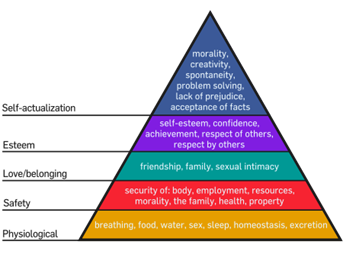I was reading an article by Gideon Rachman on the FT about how America must manage its decline and a line from with it stuck with me: “Denial is not a strategy.” What he meant was that by focusing on the dogma of “American Exceptionalism”, politicians across the aisle have swept the problems facing education, stagnating wages and hollowing out of the middle-class under the carpet.
I wonder if the Roman’s, when faced with the prospect of decline, had the same thoughts running thorough their heads: “We have the best logistics, a great army and a proud citizenry. What could go wrong?” And it did not, for a long time. It took nearly 320 years from the peak for the entire empire to disappear. However, things move faster now.
All the “decay” talk is not to take away America’s (or the North-Western countries’) stupendous achievements over the last century. An entire civilization has climbed up the Maslow’s hierarchy of needs in a very short period of time. However, once you reach the top, you are competing with everybody else who wants to get there too.

Since the past decade, piss-poor Asian countries are slowly but steadily, bootstrapping their way out of the morass that they were trapped in for the bulk of the previous century. Its not that the West is declining, but the rest of the world is simply ascending faster than them.
At this point, the worst that America can do to themselves is to continue to neglect the core of the problems facing them. There’s something seriously wrong when factory jobs cannot be staffed because you don’t find qualified workers.
“If you go to our factories in Germany, the guys on the floor can read engineering drawings.” But in the U.S., most workers lack the education and training needed to “operate in a modern, competitive manufacturing environment.” –Siemens.
Or when physics PhD’s can make more money on Wall Street coding up HFT and CDO models than they can pursuing science. And when a doorman can get credit to lease a BMW.
Somewhere in the pursuit of happiness, the notion that it needs to be backed up with hard work seems to have been forgotten.
No wonder that some Senators are backing a bill that would grant a visa to anyone who buys an expensive house in the US. You know what? This is exactly what the Romans did: Caracalla granted Roman citizenship to all freemen throughout the Roman Empire for the purpose of increasing tax revenue. Are the Americans going to walk down the same path to irrelevance?
There is no easy cure or a magic bullet that can make all these problems go away. But as Churchill once said: “Americans can always be counted on to do the right thing…after they have exhausted all other possibilities.” Here’s to rooting for the home team to turn things around.







